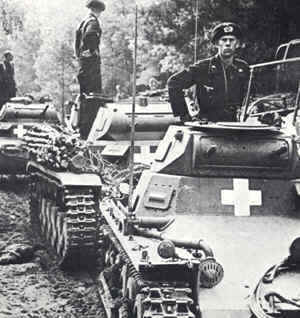Those were helpfull. But… shortly before dawn on 6 June the Naval Gunfire Spotter planes, were flying at low altitude & in a massed formation following a navigation plane across the Channel. Despite aircraft recognition training, the stripes, information on the aircraft tranisiting and routes, and a system of colored flares for indicating friendly units, the antiaircraft gunners on a ship opened fire. Several of the planes were shot down and the entire group scattered. Most were subsequently unable to find their station that morning thus degrading the effectivenss of the NGF on the first day.
I dont recall the exact numbers for the 1991 Gulf war, & dont have time to look it up this evening. From memory: of approximatly 125 US dead between 25% & 30% were offcially attributed to fratricide. A couple of examples:
During the battle of Kajafi a US Marine reconissance unit was attacked by a A10 aircraft while skimishing with an Iraqi tank column at night. A Mavrick missle destroyed one of the LAV25 vehicals, killing one and wounding several others.
During the attack into Kuwait & Iraq a troop of attack heliocopters became uncertain about the identity of some vehicals in the sector of the ground unit they were supporting. Several minutes of communication between the troop, the helo squadron commander & HQ and the ground unit commanders failed to identify one of the vehicals. The helocopter brigade commander thought the vehicals in that area enemy and became impatient. He transmitted a direct order to fire on the vehical. The squadron commander launched a missle and hit a Bradley.
Before anyone explains incidents like these as due to the ‘Fog of War’ let me say that training is dangerous.
I spent the bulk of my career in the artillery. Typically a battery shot a mimimum of 400-500 projectiles a year and several times that if there was a large scale training exercise. While I was fortunate that none of the batterys I worked in had any incidents there were more than few frightening or tragic actions nearby. We operated under a detailed & complete set of safety regulations, which were ernestly enforced. Yet serious mistakes were not uncommon.
Technology was no solution. In 1995 near the end of my career an aircraft squadron was practicing dropping laser guided bombs on the same impact area as we were using. After a full morning and half a afternoon of sucessfull bombing runs, one of the 500 lb bombs dropped at a steep angle and hit the vehical of the team operating the laser target designation equipment. Both officers were killed, and a artillery FO team nearby suffered concussion injuries. The bomb hit roughly 3000 meters off target and a few meters from the spoting team.
Ultimatly safety regulations in three centimeter thick documents, rigid enforcement, long detailed and complex orders, and multiple techincal aids are of no avail if the soldiers operating the weapons loose their situational awareness. Sucumbing to fatigue, the pressure of the moment, or the confusion of others creates the conditions for mistakes.







